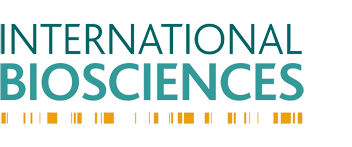Science And Your Family Tree: Begin The Discovery
What is DNA Testing?
- Mitochrondrial DNA (mtDNA) is passed through the female side of the family to both girls and boys, but only carried on through the female line. This kind of DNA testing is useful to test the general relationships between individuals to one another.
- Y chromosome DNA (Y DNA) is passed from father to son and is used to work out the level of relatedness to a common male ancestor.
- DNA based testing can also be used with sample groups to determine ethnic ancestry.
Using DNA to Trace Your Family Tree
If you are trying to use DNA testing to help clarify your family tree, your DNA test results won’t make sense unless viewed alongside another individual to work out your most recent common ancestor, or against a group sample. DNA sample databases are increasingly common for this purpose.
Y-chromosome lineage testing allows you to trace your direct paternal lineage and identify which of the 18 known paternal lineages is present in your DNA sample and the broad geographic region throughout which the lineage is found. This test identifies the direct paternal line only. Only males can take this test. Women interested in their paternal ancestry need a father, brother, paternal uncle or paternal male cousin to provide a DNA sample to determine their lineage.
Mitochondrial DNA test allows you to trace your direct maternal lineage and identify which of the 30 known maternal lineages is present in your DNA sample and the broad geographic region throughout which the lineage is found. This test identifies the direct maternal line only.
Why Use DNA Testing to Research Your Family Tree?
Traditional methods of researching your family tree will only go back so far. DNA ancestry testing is one way of reaching back further with the help of science and genetics. Thanks to breakthroughs in the field, scientists can trace our origins back tens of thousands of years – we carry the code to our ancestry inside our DNA.
Testing for Genetic Ancestry
The trend in DNA testing and genetic ancestry began with the Oxford University geneticist Bryan Sykes who discovered Europeans could trace their heritage back to one of seven women who lived 40.000 years ago, known as the ‘seven daughters of Eve’.
The Seven Daughters of Eve
Half of Europeans are thought to come from Helena who lived in the Pyrenees 20,000 years ago. Ursula is the oldest of the seven daughters, who lived 45,000 years ago in northern Greece, and one in ten are thought to be descended from her – particularly those from Scandinavia and western Britain.
What Does the Test Involve?
DNA based tests may reveal extraordinary results about your family’s ancestry, but the DNA test itself is remarkably straightforward. A mouth swab rubbed inside the cheek is enough for analysis.
Matching DNA Sequences
Although DNA testing can offer a fascinating insight into your heritage, it can also reveal other surprises. If you discover an exact match of your DNA sequence with another on the database, it means you are closely related and may be able to add each other to your family trees.

